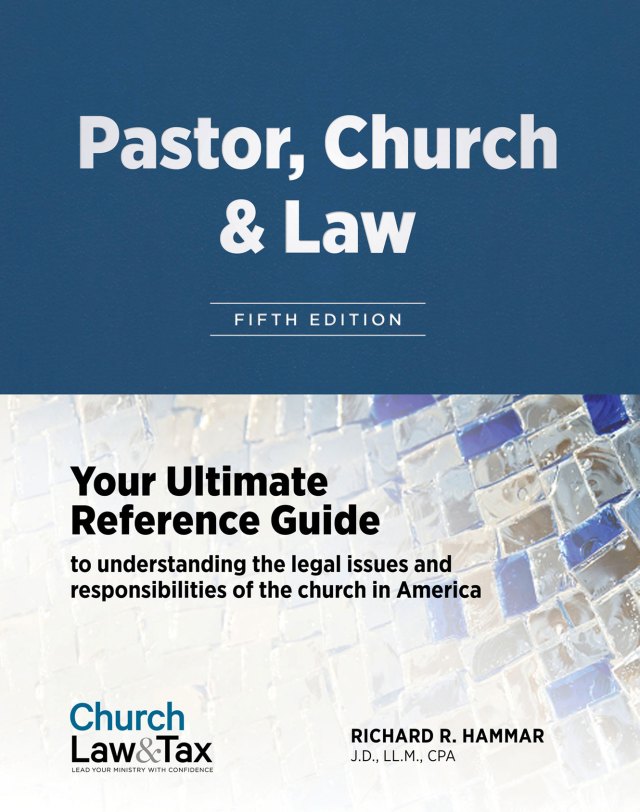On June 30, 2020, the United States Supreme Court ruled in a 5–4 decision that a scholarship program enacted by Montana’s state legislature, which denied funds for use in religious schools, was an unconstitutional restriction on the free exercise of religion. This decision will allow religious schools, at least in some cases, to benefit from financial aid made available to all other kinds of schools.
Montana’s scholarship program
In 2015, Montana’s state legislature sought “to provide parental and student choice in education” by enacting a scholarship program for students attending private schools. The program grants a tax credit of up to $150 to any taxpayer who donates to a participating “student scholarship organization.” The scholarship organizations then use the donations to award scholarships to children for tuition at a private school.
So far, only one scholarship organization, Big Sky Scholarships, has participated in the program. Big Sky focuses on providing scholarships to families who face financial hardship or have children with disabilities. Scholarship organizations like Big Sky must, among other requirements, maintain an application process for awarding the scholarships; use at least 90 percent of all donations on scholarship awards; and comply with state reporting and monitoring requirements.
A family whose child is awarded a scholarship under the program may use it at any “qualified education provider”—that is, any private school that meets certain accreditation, testing, and safety requirements. Virtually every private school in Montana qualifies. Upon receiving a scholarship, the family designates its school of choice, and the scholarship organization sends the scholarship funds directly to the school. Neither the scholarship organization nor its donors can restrict awards to particular types of schools.
The Montana legislature allotted $3 million annually to fund the tax credits, beginning in 2016. If the annual allotment is exhausted, it increases by 10 percent the following year. The program is slated to expire in 2023.
The “no-aid” provision and “Rule 1”
The Montana legislature also directed that the program be administered in accordance with the Montana state constitution, which contains a “no-aid” provision barring government aid to sectarian schools. In full, that provision states:
Aid prohibited to sectarian schools. . . . The legislature, counties, cities, towns, school districts, and public corporations shall not make any direct or indirect appropriation or payment from any public fund or monies, or any grant of lands or other property for any sectarian purpose or to aid any church, school, academy, seminary, college, university, or other literary or scientific institution, controlled in whole or in part by any church, sect, or denomination.
Shortly after the scholarship program was created, the Montana Department of Revenue promulgated “Rule 1” that prohibited families from using scholarships at religious schools. It did so by changing the definition of “qualified education provider” to exclude any school “owned or controlled in whole or in part by any church, religious sect, or denomination.” The department explained that Rule 1 was needed to reconcile the scholarship program with the “no-aid” provision of the Montana constitution.
The Montana Attorney General disagreed. In a letter to the department, he advised that the Montana constitution did not require excluding religious schools from the program, and if it did, it would “very likely” violate the United States Constitution by discriminating against the schools and their students.
Petitioners sue the Department of Revenue
Three mothers (the “petitioners”) enrolled their children in a private Christian school in northwestern Montana. The school meets the statutory criteria for “qualified education providers.” It serves students in pre-kindergarten through 12th grade, and petitioners chose the school in large part because it “teaches the same Christian values that [they] teach at home.”
The child of one petitioner has already received scholarships from Big Sky, and the other petitioners’ children are eligible for scholarships and planned to apply. While in effect, however, Rule 1 blocked petitioners from using scholarship funds for tuition at a Christian school.
To overcome that obstacle, petitioners sued the Department of Revenue in Montana state court. They claimed that Rule 1 discriminated on the basis of their religious views and the religious nature of the school they had chosen for their children.
The trial court concluded that Rule 1 was not required by the no-aid provision, because that provision prohibits only “appropriations” that aid religious schools, “not tax credits.” The ruling freed Big Sky to award scholarships to students regardless of whether they attended a religious or secular school.
For the school year beginning in fall 2017, Big Sky received 59 applications and ultimately awarded 44 scholarships of $500 each. The next year, Big Sky received 90 applications and awarded 54 scholarships of $500 each. Several families, most with incomes of $30,000 or less, used the scholarships to send their children to the Christian school the petitioners’ children attended.
The state supreme court reverses earlier ruling
In December 2018, the Montana Supreme Court reversed the trial court. The state supreme court ruled that the program aided religious schools in violation of the no-aid provision of the Montana constitution.
In the court’s view, the no-aid provision “broadly and strictly prohibits aid to sectarian schools.” The scholarship program provided such aid by using tax credits to “subsidize tuition payments” at private schools that are “religiously affiliated” or “controlled in whole or in part by churches.” In that way, the scholarship program flouted the state constitution’s “guarantee to all Montanans that their government will not use state funds to aid religious schools.”
The US Supreme Court declares Rule 1 unconstitutional
The United States Supreme Court agreed to review the case, and in its 5–4 decision written by Chief Justice John Roberts, concluded that Rule 1 was an unconstitutional restriction on the free exercise of religion. The Court rejected the claim that the Montana scholarship program was an unconstitutional establishment of religion:
We have repeatedly held that the Establishment Clause is not offended when religious observers and organizations benefit from neutral government programs. . . . Any Establishment Clause objection to the scholarship program here is particularly unavailing because the government support makes its way to religious schools only as a result of Montanans independently choosing to spend their scholarships at such schools.
The Court relied heavily on its recent ruling in Trinity Lutheran Church of Columbia, Inc. v. Comer, 137 S. Ct. 2012 (2017), in which it ruled that disqualifying otherwise eligible recipients from a public benefit “solely because of their religious character” imposes “a penalty on the free exercise of religion that triggers the most exacting scrutiny.”
In Trinity Lutheran, Missouri provided grants to help nonprofit organizations pay for playground resurfacing, but a state policy disqualified any organization “owned or controlled by a church, sect, or other religious entity.” Because of that policy, an otherwise eligible church-owned preschool was denied a grant to resurface its playground. The Court concluded that Missouri’s policy discriminated against the church “simply because of what it is—a church,” and so the policy was subject to the “strictest scrutiny,” which it failed.
The Court, in Trinity Lutheran, acknowledged that the state had not “criminalized” the way in which the church worshiped or “told the church that it cannot subscribe to a certain view of the Gospel.” But the state’s discriminatory policy was “odious to our Constitution all the same.”
Here, too, in the Montana case the Court concluded:
Montana’s no-aid provision bars religious schools from public benefits solely because of the religious character of the schools. The provision also bars parents who wish to send their children to a religious school from those same benefits, again solely because of the religious character of the school. . . . The provision plainly excludes schools from government aid solely because of religious status,” just as in Trinity Lutheran. . . . The Free Exercise [of religion] Clause protects against even “indirect coercion,” and a State “punishes the free exercise of religion” by disqualifying the religious from government aid as Montana did here.
The Court continued:
The Montana Supreme Court should have “disregarded” the no-aid provision and decided this case “conformably to the Constitution” of the United States. That “supreme law of the land” condemns discrimination against religious schools and the families whose children attend them. They are “members of the community too,” and their exclusion from the scholarship program here is “odious to our Constitution” and “cannot stand” (citing Trinity Lutheran).
What this means for churches with religious schools
Churches or denominations with religious schools should note the following significant points regarding the Supreme Court’s decision:
- Most importantly, this case will allow religious schools, at least in some cases, to benefit from financial aid made available to all other kinds of schools (i.e., public and private secular schools). Religious schools cannot be excluded from such aid solely on the basis of their religious status. As the Court concluded, religious schools are “members of the community too,” and their exclusion from the scholarship program here is “odious to our Constitution” and “cannot stand” (citing Trinity Lutheran).
- This case may contribute to a greater degree of school choice, depending on current and future state-enabling legislation.
- The trial court in this case noted that the no-aid provision in the Montana constitution prohibits only “appropriations” that aid religious schools, “not tax credits” to donors.
- The Supreme Court noted that any Establishment Clause objection to the Montana scholarship program “is particularly unavailing because the government support makes its way to religious schools only as a result of Montanans independently choosing to spend their scholarships at such schools.” In other words, the primary beneficiaries of the scholarship program were parents who were empowered to use scholarships to pay for the tuition of their children in a school of their choice. The fact that this might include a religious school did not make such schools the primary beneficiary.



